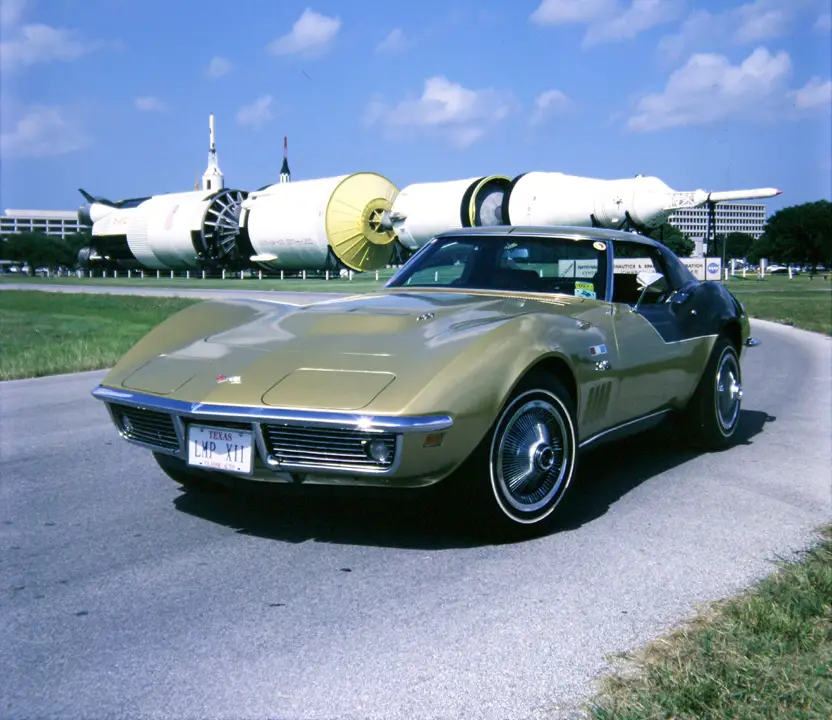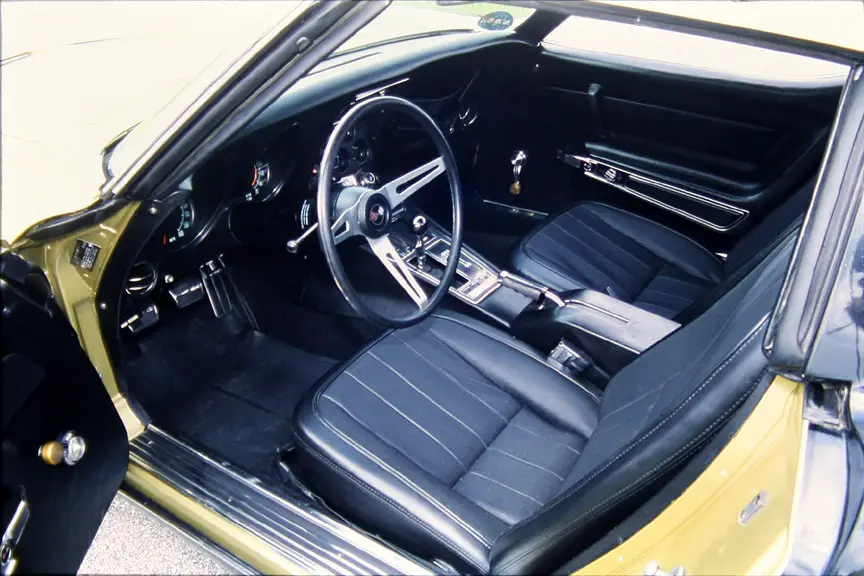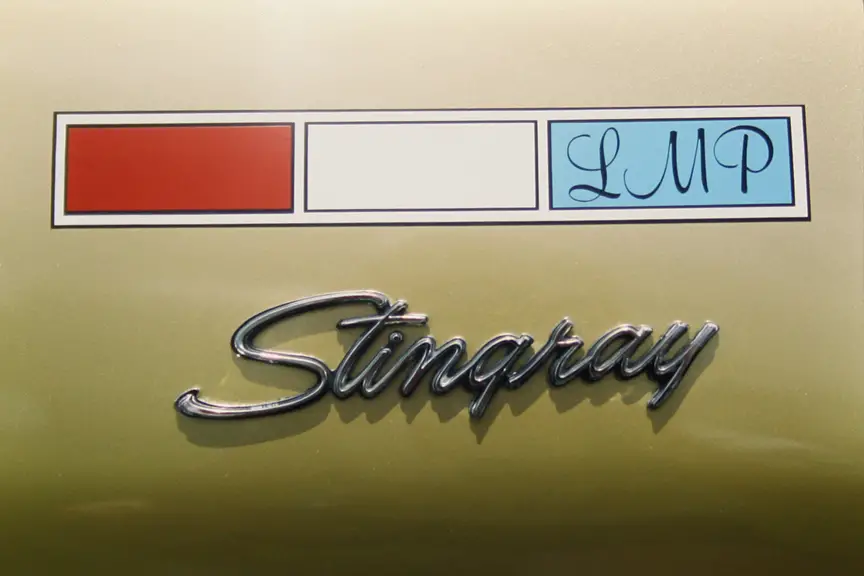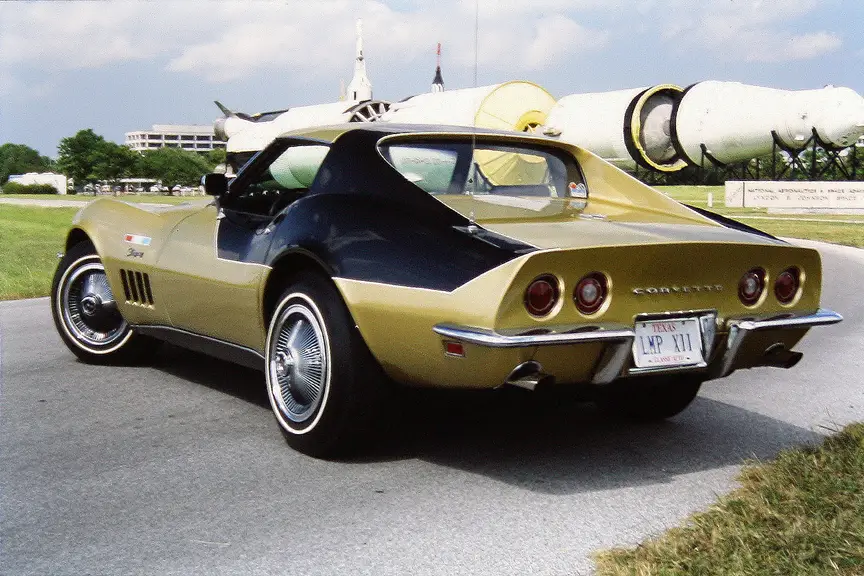A Corvette is defined as a lightly armed warship, smaller than a destroyer, often armed for antisubmarine operations. Perhaps a second definition should be, the car with “The Right Stuff.” The official definition seems very appropriate, though, because the car shown in this article was one of three virtually identical 1969 Corvettes loaned by General Motors to the all-US Navy crew of Space Mission Apollo 12 who flew the second lunar landing mission in November of 1969. The crew – Charles Conrad, Jr., Richard Gordon, and Alan Bean – drove their Corvette Stingrays while training for the mission.
Their space mission training meant much time was spent traveling between Lyndon B. Johnson Space Center, in Houston and the Kennedy Space Center at Cape Canaveral, Florida. They flew planes for those trips, but their Corvettes were often driven for them to the respective locations by NASA individuals. During a phone interview, Alan Bean said, “After training hours were completed, it was nice to jump in and drive the Corvette.” Most of the driving took place between the Cape and the Cocoa Beach hotel while training in Florida, or from home near Houston to the LBJSC. One would expect a few drag races between the co-workers, especially considering Conrad participated in SCCA racing, but Captain Bean stated, “There was not much opportunity for that since we were too busy training for the space mission.” He also noted, “… had to be careful when driving in bad weather … with those wide back tires the car would easily hydroplane and always had to anticipate when the car might be ready to slip and slide.”
The Stingray original model débuted in 1963 with good reviews. The Corvette got a redesign in 1968, however, it was not well received by the news press; almost all of the reports complained about the car’s looks. Perhaps the worst criticism came from Car and Driver which declared it “… unfit to road test.” On the contrary, Car Life found its appearance to be “exciting” and had mostly positive things to say about the Corvettes they tested. The general public agreed with the latter viewpoint because sales soared about 25 % to a record level for the time being. In an extreme move that could be interpreted as meaning, “Screw the press,” Chevrolet’s 1969 Corvette was only slightly changed from its predecessor; however, the Stingray name was restored. Corvette sales set another record with production reaching a total of over 38,000 which exceeded the 1968 totals by more than one-third.

The success of the 1969 Corvette
This overwhelming success of the Corvette was in stark contrast to its beginning. The Corvette program was almost dissolved after a few short years due to low interest. Not many people liked the car, but there was one driving enthusiast who loved Corvettes and would also fly into the history books. Alan Shepard, one of the original 7 astronauts and the fifth man to walk on the moon, bought a 1953 model in 1954, partly because he felt it “gave me the right feeling as a Navy test pilot.” He owned an additional 1957 model when selected to be an astronaut by NASA in 1959. His fame and love of Corvettes soon led to Shepard meeting the famous Zora Arkus-Duntov, GM’s chief engineer for the Corvette. Eventually, the relationship led to GM giving Shepard a brand new Corvette. The idea met with some resistance at first because General Motors had no program to give free cars to any VIPs; this reluctance disappeared after Shepard’s space flight in May of 1961. However, the astronauts were forbidden to do product endorsements, so the car was sent to America’s newest hero without any publicity or expectations.
At about this time, J. Rathmann, a successful race car driver who had won the 1960 Indianapolis 500 and owner of a Cadillac dealership in Florida, decided to offer the other astronauts Corvettes through an executive lease program. Rathmann asked Mr. Ed Cole, the head executive for GM at that time if a “special package” could be arranged for the astronauts; this was approved. The price of leasing a Chevy was $1 per year. At the end of the year, the car was returned to the dealer and a new one was chosen.
Of the 7 original astronauts, only Glenn and Carpenter did not participate in the program. Glenn was more conservative preferring to drive a Prinz which he referred to as “junk”. Carpenter drove a Shelby Cobra. Schirra had a preference for Austin Healey’s and Maserati’s though he did have at least a couple of Corvettes.
The astronaut team grew larger in 1962; with 14 more added the following year and more additions followed in 1965, 1966, 1967, and 1969. The program of loaning cars to the astronauts not only included the option of driving a Corvette but any Chevy vehicle. As many as two cars could be selected at any one time. Some opted for a station wagon for a second car while others did not select a Corvette at all. J. Lousma who flew aboard Skylab chose a family car because as he explained during an interview for this article, “Family comes first!” He elaborated, “It was nice to get a new Chevrolet since we received military pay and not the big dollars most people think astronauts received.” Although, he said he did take advantage of Bean’s offer to let him drive his 1969 Corvette on one occasion. The Chevrolet loan program continued into 1971 until the government began receiving complaints about GM getting free advertising from the space program. The Apollo 15 crew was among the last to receive Corvettes through the GM program.

The 1969 Corvette Paint Scheme
The space crew decided a special paint scheme was needed for these Corvettes, and since Alan was the artist among the astronauts he was put in charge of this task. Alan explained during an interview, “Pete probably came up with the idea. Due to the heavy training schedule, there was little time to give much thought to design, but I did present 3 or 4 ideas to Rathmann.” He took it from there. As Alan recalled, “Rathmann painted the first Vette. The first paint job may have had more black and the hood may have been black. Although we did not care for it, Jim was patient and repainted the Vette perhaps 2 more times.” The last paint job resulted in thin white pinstripes being added to divide the black from the gold. Although, some of the finer details of the project have been forgotten over time. Bean could not recall why black was chosen since blue and gold are the US Navy colors.
A defining characteristic of the three cars was the red, white, and blue decal mounted above the Stingray script on each fender. The colors were more than just patriotic; they served as color codes for the respective crew members. While the red color identified the commander’s role, white represented the command module pilot, and blue was used to designate the lunar module pilot. These colors were used to mark the personal belongings of each astronaut during a space mission. The decals for the Corvettes had the official abbreviation of the crew position written over the appropriate color code. In the case of the subject car, LMP for the lunar module pilot was written over the blue portion of the emblem. Other than the addition of black paint and the identifying decal, the cars received no other changes.

The Conclusion of the 1969 Corvette
Sometime in the early 1970s, Conrad, Bean, and Gordon returned the cars to a Houston dealership and were subsequently sold to individuals. The car dealer was probably not shy about mentioning the history of the cars to potential buyers. The whereabouts of where the “CDR” and “CMP” Corvettes went are not known, but the “LMP” Corvette went to G. A. Smith, a friend of Danny Reed of Austin, who kept the car for about one year before being called to duty by the military. Smith returned the car “voluntarily” and it was in turn sent to the GMAC office in Austin, Texas. Later that year Danny was driving by GMAC when he noticed the Corvette sitting on the lot. He was very surprised to find it there because he had been unaware of his friend Smith being drafted. A quick call to the dealership revealed the car was going to be sold through a silent bid process. Danny’s bid was the 2nd highest, however, after two weeks the high bidder had failed to produce the money. Danny then received a call from the dealership asking if he was still interested in obtaining the Corvette at his original offer. That was in 1971, but today you can find this gem displayed at the National Corvette Museum.


